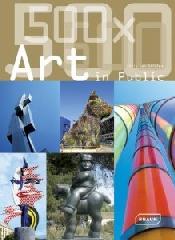Works of art make a substantial contribution to cultural identification. When they are placed in a public place this function is enhanced. However the artworks also acknowledge other tasks: they figuratively announce content in their traditional role, standing as the image of a ruler or at least serve as decoration, while in the Modern period they become increasingly space defining or shaping. In this volume around 150 works present the history of this species of art. By referring to important contemporary works, the development of contemporary art in public places during the last decades, which dominates the volume with about 350 examples, can be traced. Succinct texts locating the work, the artist and the style, concentrate on what is special about the works and explain the effect they have every day on passers-by according to Paul Watzlawick's axiom that One can not not communicate'.

(0 Comentarios)